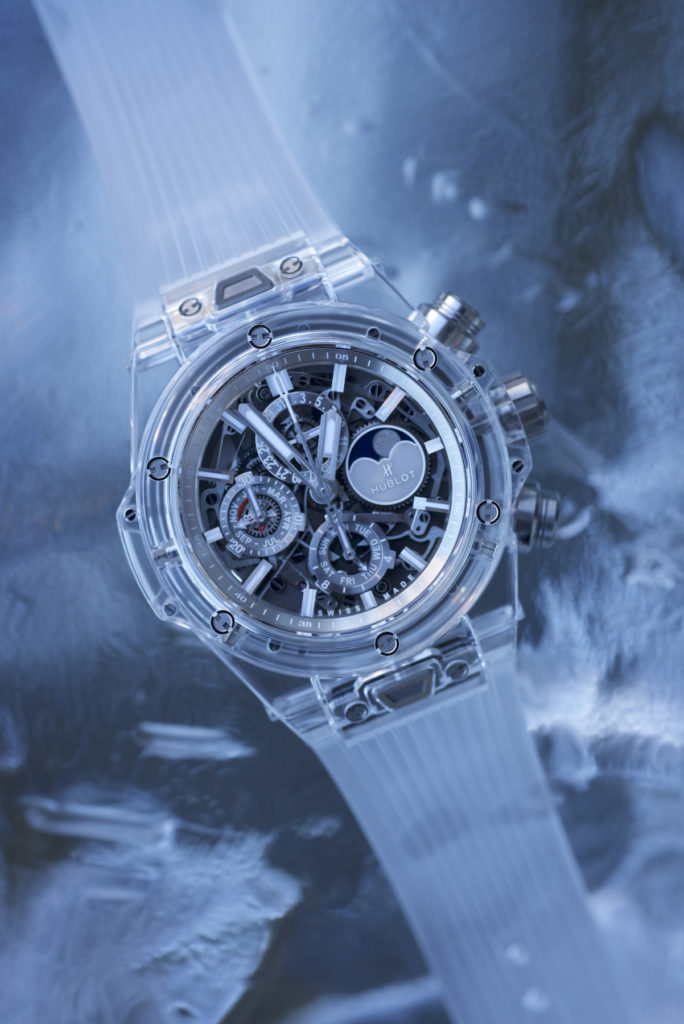With a completely transparent encasing of its Grand Complication, Hublot redefines the concept of what a precious material can be.
By Stephen Watson
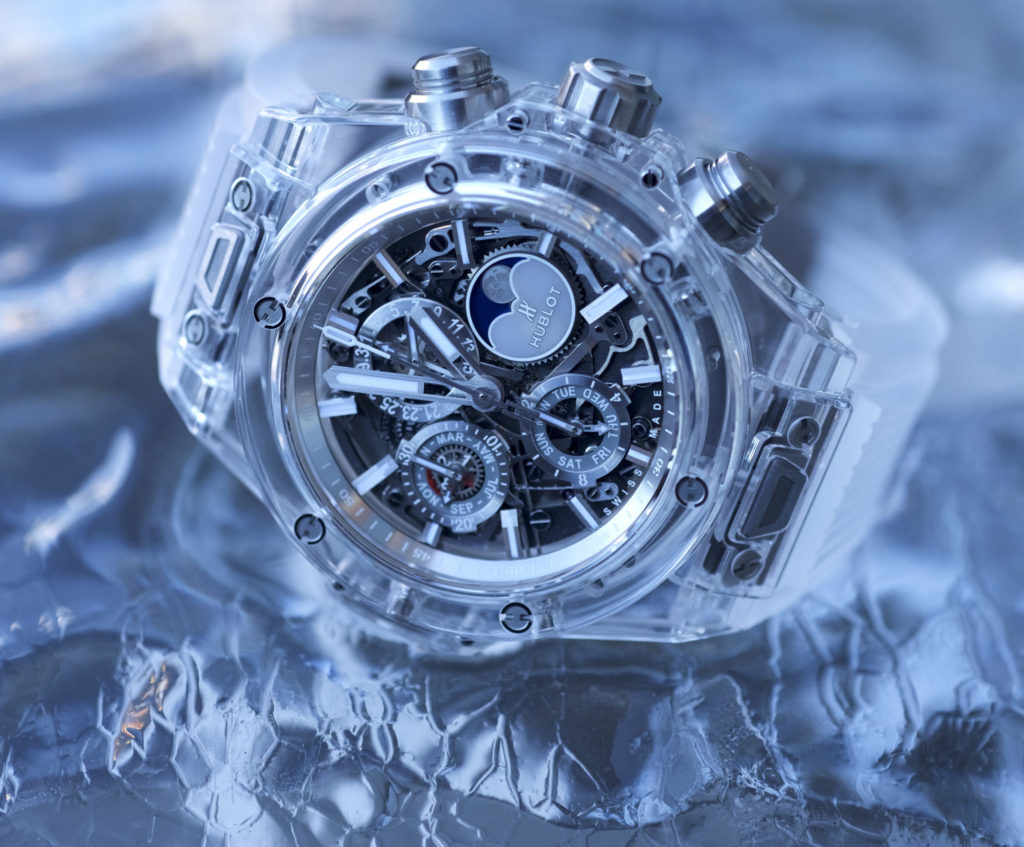
Pink gold? Platinum? Titanium? Market trends predict a return to a new type of discretion. So how about a grand complication that can barely be seen yet has nowhere to hide?
We’re talking, of course, about the magnificent watch on this month’s cover: Hublot’s Big Bang Unico Sapphire. What at first glance appears to be a timepiece made out of clear plastic is, in fact, an ingenious see-through case cut from a solid block of sapphire crystal. Incredibly scratch-resistant and almost as tough as diamond, the case lays bare the inner workings of the HUB1270 UNICO Manufacture self-winding perpetual calendar and chronograph movement in all its technical virtuosity. It’s a watch that must be seen to be believed.
Watch Journal had the opportunity to speak with Ricardo Guadalupe, CEO of Hublot, about the brand’s cutting-edge creativity, mechanical innovations, and enduring devotion to the Art of Fusion.
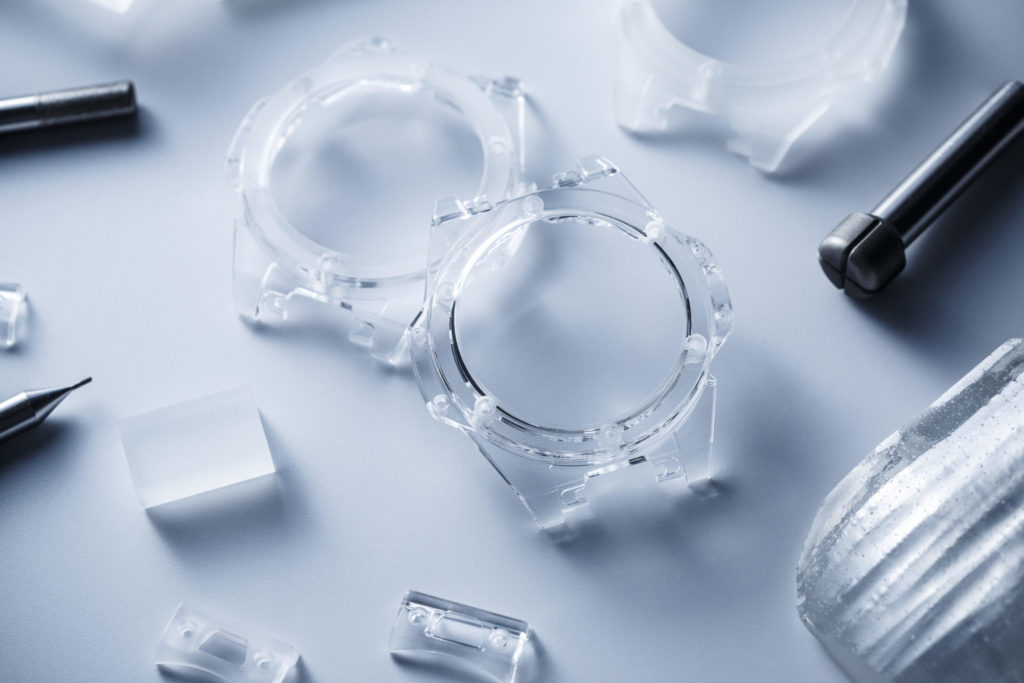
How did the concept of the clear watch come about?
The idea was to play with the visible and the invisible—to present the heart of an exceptional timepiece as if it was suspended in the air. With a transparent case, a movement can be admired at 360 degrees. Our dream had long been to produce such a watch entirely in colorless sapphire, which is light, nearly invisible, and virtually scratch-proof. Sapphire is one of the hardest materials on earth, second only to diamond.
We also liked the idea that a transparent watch would allow us to highlight Hublot’s tradition of constant innovation in using and developing new materials.
Speaking of cutting-edge materials, Hublot is known for what it calls the Art of Fusion. How has this helped to define the brand’s DNA?
Combining two materials that never coexist in nature is the driving idea at Hublot. Even the first Hublot models from 1980 merged gold cases with rubber straps—quite extravagant for that time! Just like watchmakers in the eighteenth and nineteenth centuries, we will use classic materials such as gold for the case or brass for the movement—however, we combine them with other materials like titanium, ceramic, carbon fiber, Kevlar, even rubber. And we don’t stop there, because we also develop our own new materials. For instance, we have worked in conjunction with the EPFL in Lausanne on basic scientific research for many years. And from this cooperation has arisen a scratch-resistant gold and ceramic alloy that Hublot calls “Magic Gold.”
As a motto, the “Art of Fusion” refers not only to the materials themselves but also encompasses more abstract ideas: the fusion of past and present, tradition and innovation.
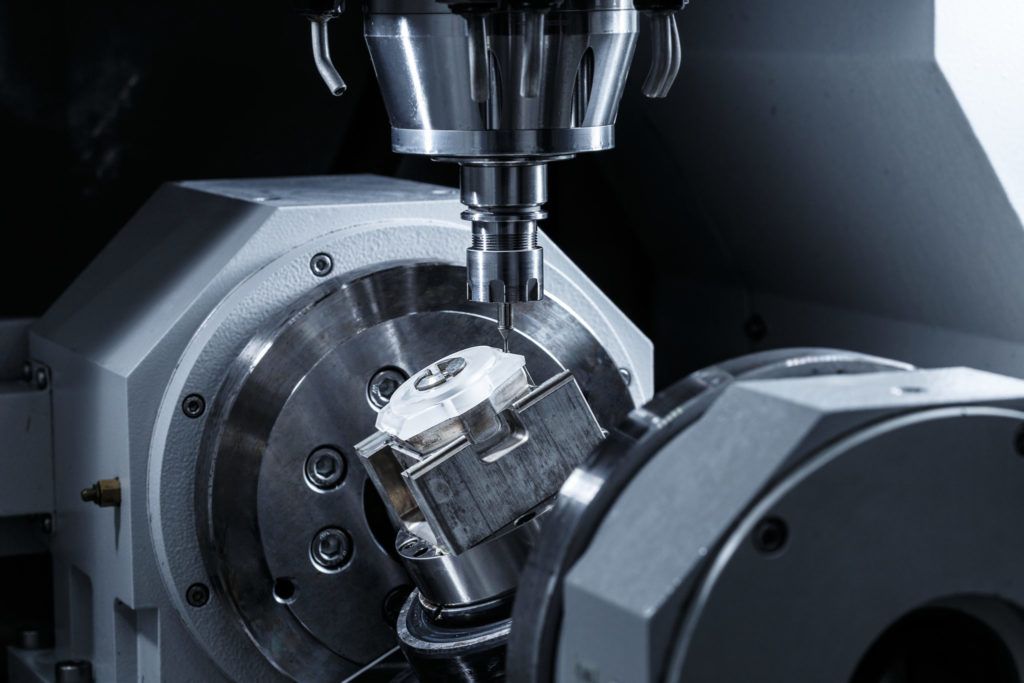
How is the sapphire material generated?
Sapphire can be generated by various types of processes, but the ones we use are the Kyropoulos and Verneuil processes. Because sapphire is so hard—measuring 2,000 on the Vickers scale—it requires specific machines to manufacture it and to polish it. Making the sapphire crystal itself was not the issue for us—it was the manufacturing of our components in sapphire that was challenging.The material comes to us in a raw block, which then to be cut into the correct shape. We invested several million Swiss francs in machinery to be able to produce the components and we also invested in machines able to polish the transparency of the sapphire. It took us nearly twenty years to develop the tools and technology that could create the watches to our satisfaction.
What are the possibilities of generating this material? Colors? Textures? Patterns?
The standard color for sapphire is “clear,” but by adding additives during the growth of the crystal, it is possible to create different colors. In 2017 we introduced the sapphire in red and blue. Regarding textures and finishes, it is possible to have a matte or a polished surface finish. Regarding the patterns, for the time being, we use black metallization (for the realization of black smoked sapphire) as well as laser engraving and fill with color lacquer for engravings on the caseback of the watch.
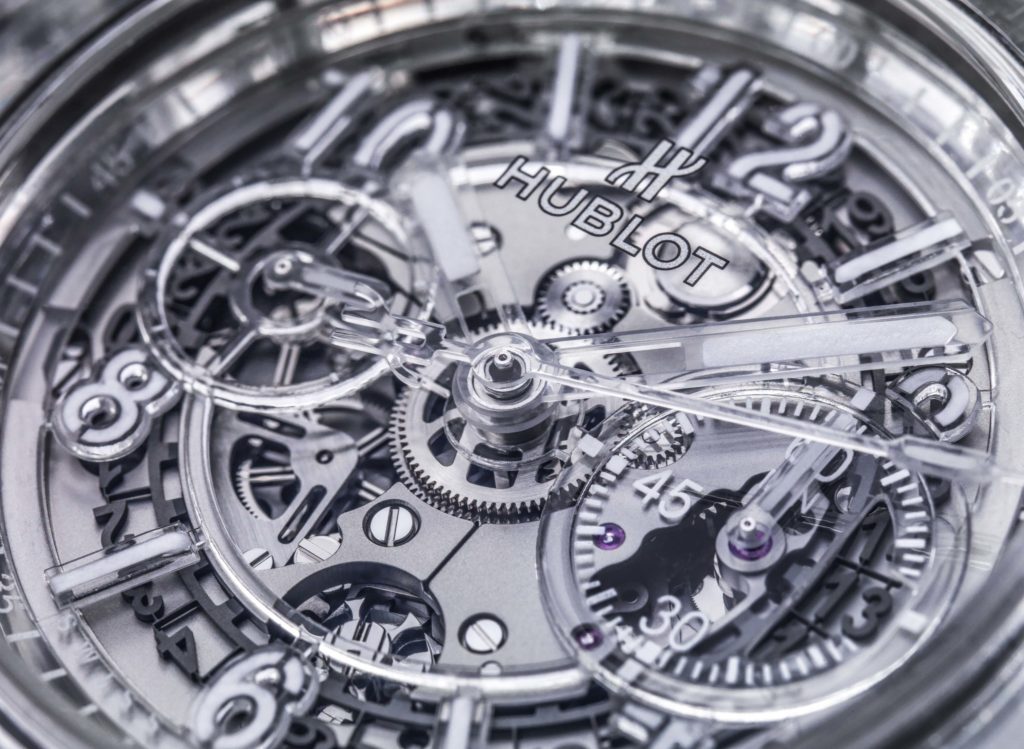
Can you talk us through some of the steps of the watch’s fabrication?
The different essential steps include diamond wire cutting for the raw material, diamond milling for the components to roughed out and diamond polishing of the finished components, so that the surfaces are perfectly polished, revealing the total transparency of this material. The polishing step is very complicated because this is not easy to do on complex shapes and there is a considerable risk of breakage. Sometimes the end step of polishing will also reveal minimal defaults in the crystal.
How long does the process take from start to finish?
It takes between twenty to thirty days to grow a crystal which weighs around 110 to 150 kilos. After this time, we need to cut the raw material, mill it, and polish it. Depending on the component, it can take hundreds of hours to achieve a finished component. And the results aren’t guaranteed until we polish and carefully examine the result.
How do new elements, such as sapphire, help reimagine traditional luxury?
Hublot stands for always being first, unique and different. I think there will always be a place for watches like ours because we are producing watches that are eternal. You have a world of emotions in a box that will last for the next fifty, hundred or two hundred years, but we give them a contemporary design thanks to the unique materials we use and create.
